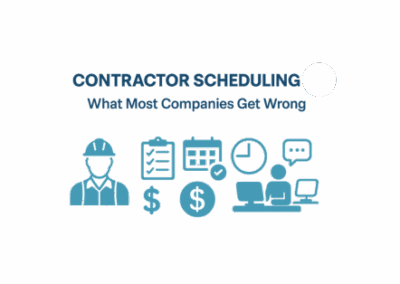Are you a business that operates 24/7 and needs long, unsociable shifts filled by staff? Rotating schedules might be the solution you’ve been looking for!
Ensuring you have workers to fill your shifts can be difficult when no employee wants to work all unsociable shifts and have no work-life balance. This is where rotating schedules come into play as they allow your employees to take turns working the unpopular shifts. It’s a fair option and gives each employee enough time off in between shifts and means the job doesn’t get too repetitive.

Any industry that requires 24/7 coverage, or relies heavily shift work should use rotating schedules to spread shifts fairly. This might include;
So, let’s take a deep dive into this type of schedule, and why you should consider it!
What is a rotating schedule?
A rotating schedule refers to scheduling practice to cover various types of shifts. It means that an employee works a certain shift e.g. night shift, for a set period of time. Then they rotate to another shift, e.g. a day shift, for a set period.
It might be a one week cycle, and it’s the total opposite of a fixed schedule. The schedule can rotate a number of times depending on the company requirements. The rotation begins again so workers know exactly what shifts they are expected to work in advance. There are different types of rotating schedules based on frequency and types of shifts.
Benefits of a Rotating Schedule
Rotating schedules a great for so many reasons. While it might be easier to have a group of employees on night shift and leave it at that, here’s why you should consider mixing things up.
IMPROVES WORK-LIFE BALANCE
Having a rotating shift work schedule means employees aren’t constantly working the same shifts all the time. Generally, employees won’t work different shifts on consecutive days. It gives all employees a chance to have a day or night off and make use of their time off.
This improved work life balance also leads to healthier sleep schedules for employees. As you might imagine, this leads to happy, healthier employees. If your employees are happy, you will see higher levels of employee engagement, and lower levels of employee turnover.

IMPROVES PRODUCTIVITY
Employees who are well-rested are less likely to experience burnout. This leads to improved productivity in the long run. It is so worth it to look at your schedules to ensure it is fair for all your workers.
Having a mix match of different shifts in your work schedules is excellent for the productivity levels of your team. It leaves them feeling more refreshed rather than drained from repetitively!
ENSURES A FAIR SCHEDULE
Rotating shift schedules give less opportunity for disputes can arise over the fairness of a schedule. There is complete transparency over why certain people are getting scheduled to work certain shifts. That way no one can complain over having the 12-hour shifts for a rotation.
Employees know there is no favoritism involved when the schedule is created in this way. This is a good way to improve trust and communication between employees and management.
IMPROVES SOCIAL ASPECT OF THE JOB
With a rotating schedule, employees are working with a number of different people during their shifts. It gives people a chance to socialize with other employees than they would if they worked the same shift all the time. The same applies to working with other customers or vendors.
MORE AVAILABLE SKILLS
The shift tasks will vary greatly depending on what kind of shift it is. For example, a day shift where the employee is responsible for opening is completely different from a closing shift. This gives employees a good opportunity to learn new skills and put their current skills to the test. The business benefits because it means you can spread employees with certain skills across multiple shifts.

MORE VARIATION
Another great thing about rotating schedules is that it reduces the monotony of certain jobs. When an employee is constantly working the same shift and doing the same work the job becomes tedious and leads to human errors. Keep things fresh and shake up the type of work being done where possible.
So now we’ve discussed the benefits of rotating schedules. Let’s discuss how you can put it into action.
How to use Rotating Schedules
DECIDE ON THE FREQUENCY OF YOUR ROTATING SHIFT
Remember, every organization is different so you will have to decide what the best shift option is. This depends on how many staff members you need to cover a shift, and what your daily operations are like.
For example, restaurants may need more workers to work the later shifts while a manufacturing business may need people for early mornings. You also need to decide how often employees will rotate. Will their schedule need to be rotated every week? Every month? It might require some trial and error before finding your stride.
SCHEDULE your EMPLOYEES
Once you have the schedule down, you need to assign your workers. Start allocating shifts to your workers depending on availability. Once you have assigned all workers required for a certain shift, go back to the beginning and slot them in for the second shift. Keep doing this for all the upcoming shifts.

AUTOMATE THE PROCESS where possible
Consider using an employee scheduling software like Celayix to allow you to automate your rotation scheduling. Fill your schedule in minutes based on certain business rules or qualification requirements. You can read about the Celayix Autofill Rotation tool here for more information.
MANAGE THE SCHEDULING PROCESS
Using rotating schedules takes a bit of planning at the beginning but once you have it created the process runs quite smoothly if your shifts are always the same. The one thing you need to bear in mind is those pesky last-minute changes that often occur.
We get it, emergencies and sicknesses happen to everyone but it can cause chaos to a scheduler! Consider using tools such as find a replacement. This allows you to quickly find a replacement based around set requirements and send them a notification instantly. This means you don’t have to waste time calling other employees to fill dropped shifts! Basically, ensuring you have the resources to hand to help with scheduling your rotating shifts can make life a lot easier.
Now that you know all about rotation scheduling why not try it out for yourself? One of our solution advisors would be happy to talk you through how you can start implementing it with Celayix today!




